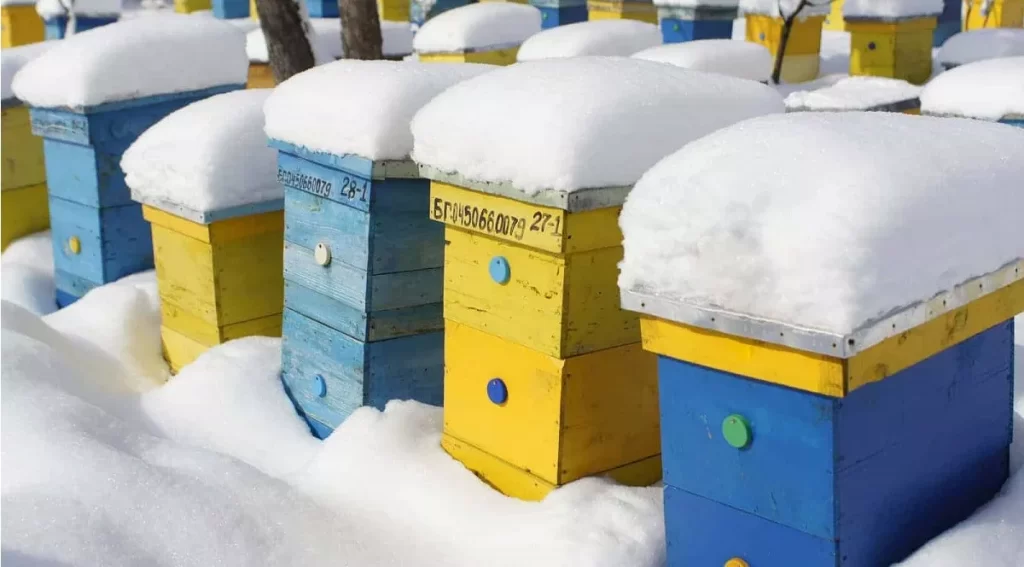In February, the bees begin to gain momentum in the hive. Compared to January, the queen bee showed a significant increase in egg-laying performance and an increased risk of starvation. There is more pollen on the tree, but bees need warm days to harvest it.
Bees haven’t collected honey yet, but many of the bees that forage nectar in the spring and summer are now just eggs. February is a slight extension of what happened in January. Days and nights are still extra cold, but there will be more heatwaves affecting your bees. When there are a few warm days in nature, bees leave the hive in search of pollen. Pollen is in high demand in February because bees need the protein in pollen to feed their larvae. They feed the bees by combining fresh pollen with residual honey stamped from last year.
The cold of February makes it especially difficult for bees. When it’s cold, it’s best not to open the hive and turn over every frame. You can usually learn a lot by looking at the holes in the inner cover.
When a major cold snap occurs, the bees must pack tightly together to stay warm, which can expose the outer edges of the nest to the cold. If the nest is too cold, it cannot survive, and all cold nests must be removed from the hive by the bees during the next warm period. Because of this, bees will slowly expand their egg production so they have enough adult bees to keep unhatched bees warm.

Watch The Hive Entrance
You can tell a lot from the hive just by looking at the entrance. There is a marked increase in activity at the entrance between 1pm and 2pm each day, so this is the best time to watch. Watch out for bees bringing in pollen on their hind legs, this is always a good sign. If you don’t see any activity, the bees are probably dead.
Egg Laying
While the number of eggs the queen is laying is increasing, it is not as many compared to January. The reason for this is that adult bees must keep both capped and uncovered broods warm.
Feed the bees in February
One of the most important aspects of surviving your hive in the winter is knowing how to feed your bees in the winter. So many beekeepers lose their hives in the winter, blaming the cold. Cold weather is rarely the cause of winter bee deaths. They are perfectly capable of enduring the harsh winter weather in the north.
The amount of honey that needs to be stored in winter varies by geography and climate. In colder places, bees use up to 70 pounds of honey. This means a full deep box with a frame. If you find that your bees are not storing enough honey, consider providing extra food for the colony.
Read the article: How to Feed Bees in Winter
Beekeeping Task Checklist
Use days above 50°F to inspect your hive. You want to see bees flying around to go to the toilet. If you can’t be home when the temperature is at its highest, look for evidence that the bees are outside – usually, droppings scattered around the front of the hive or near the hive is a good sign.
The hotter the weather, the more thoroughly you can investigate. At around 18°C, you can briefly open the hive to inspect the remaining honey storage compartment and remove the carcasses accumulated in winter Concentrate the honey supply in one area and start feeding when the honey runs out.
We recommend a 1:1 water to sugar ratio in the spring, as bees use it for instant energy, not for storage. Do not completely fill the jar as the solution will still freeze. Check it when it’s hot enough to make sure the holes aren’t clogged.
If your bees did not survive the winter, our condolences to you. It’s hard to lose a colony. Rest assured, work on your deceased colony will give your new colony a stronger start. If your colony won’t survive, now is the time to put down a deposit for new bees so you can start early.
Education and outreach
Learn the difference between wasps and bees, and identify some of the most important flying insects.
Here are a few books that might help get you through winter nights!
Buzz: The Nature and Necessity of Bees by Thor Hanson
Honeybee Democracy by Thomas D. Seeley
Dancing With Bees: A Journey Back to Nature by Brigit Strawbridge Howard
Our Native Bees by Paige Embry
